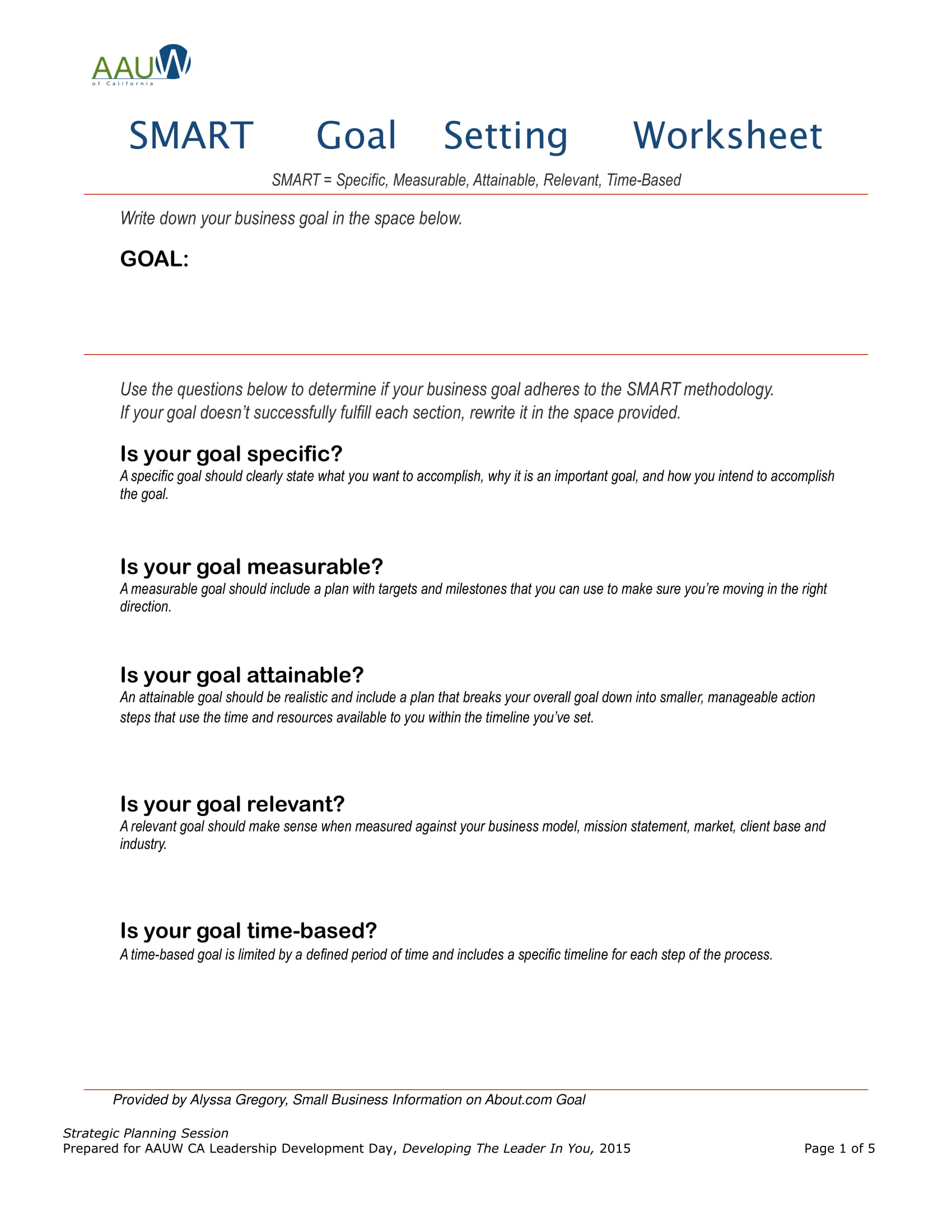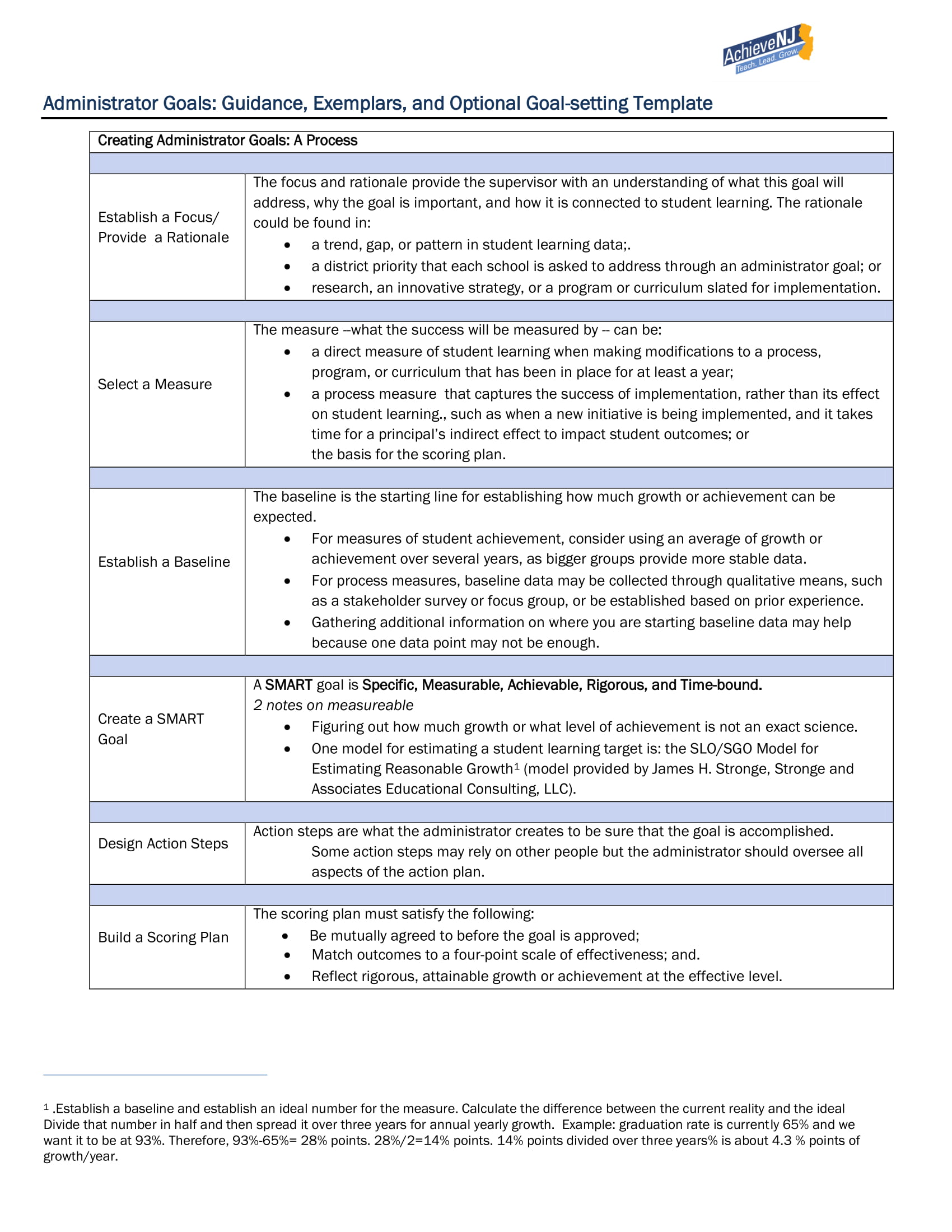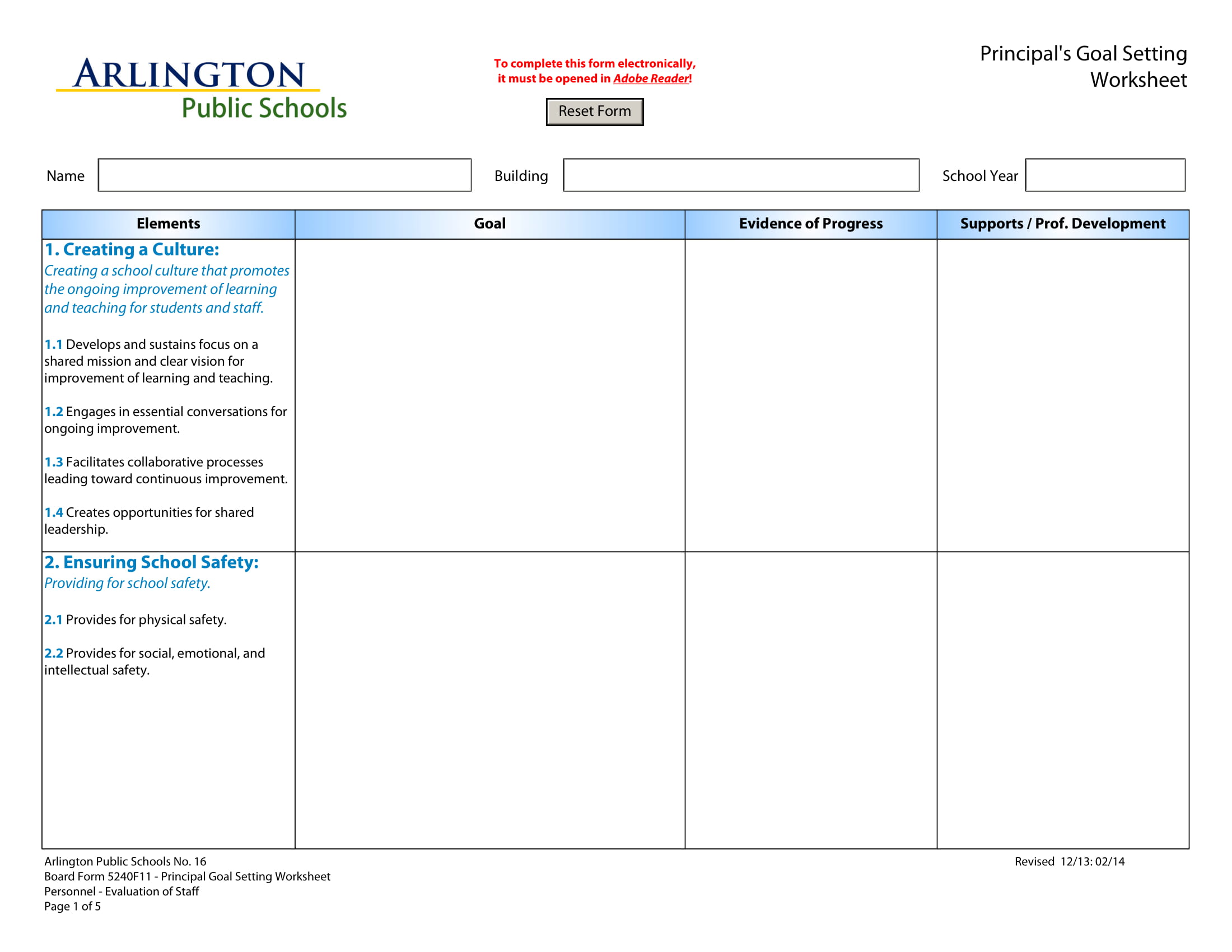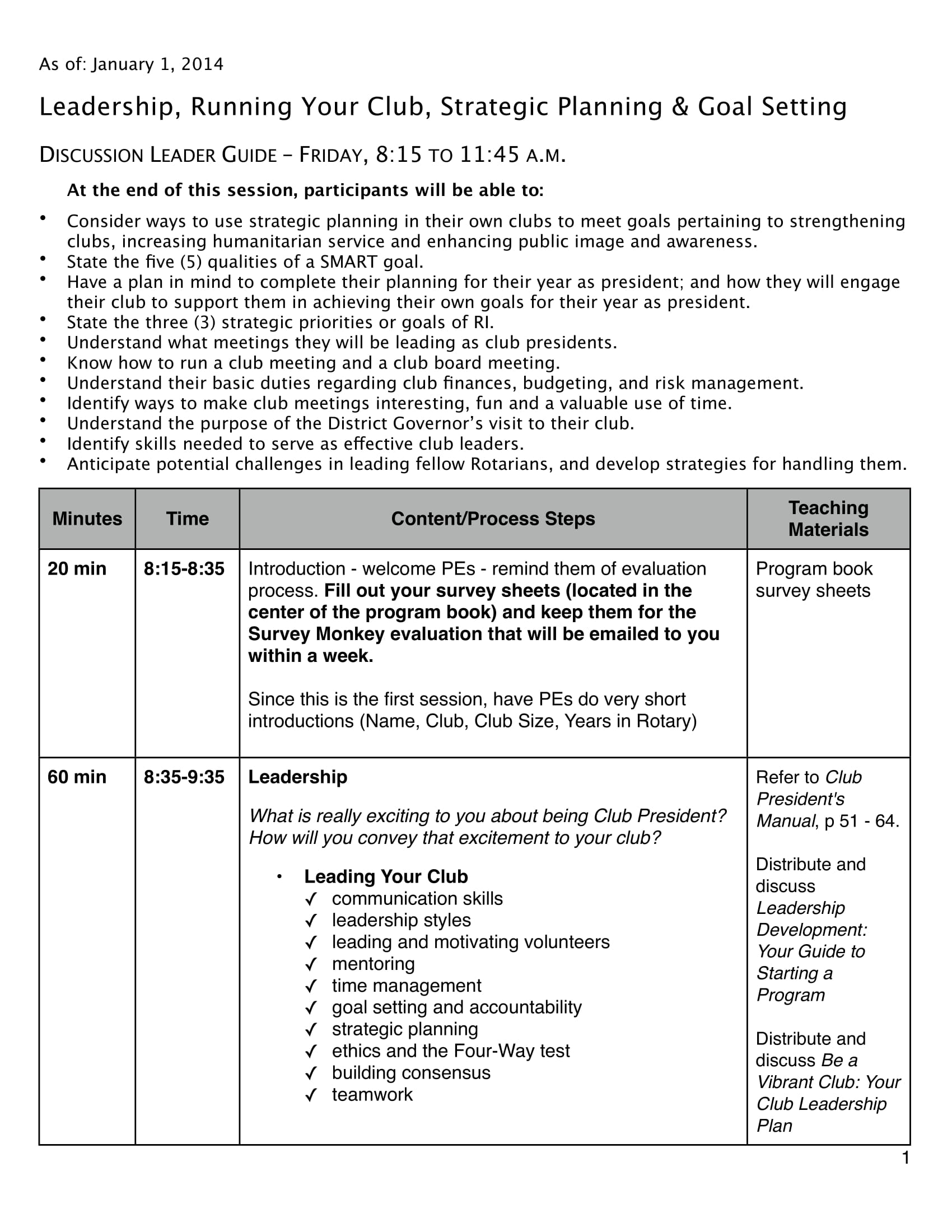9+ Leadership Goal Setting Examples to Download
Leaders serve as the guiding light to its constituents. It is a leader’s responsibility to make sure his/her constituents are able to perform their designated tasks and responsibilities are carried out efficiently and effectively. A leader is also in charge of making sure his/her team is of good working condition, motivate his/her teammates, bring in accurate solutions to problems, decide on what options to choose, and so on. A leader sure carries a lot of responsibilities on his/her shoulders, but without an effective leader there is bound to be disorder in the workplace or anywhere else.
With that in mind, it is also important for leaders to set the right goals for hi/her team. This means that although leaders have the responsibility of setting the goals and assigning who works on that goal, he/she must still communicate with his/her teammates when setting the goals so that he/she can ensure his/her teammates are capable of doing the tasks and that they understand the purpose of each goals and tasks.

Importance of Leadership Goal Setting
When you have a team that you have to work with, it is important to take some aspects into consideration. It is crucially important that not only you, but the whole team understands the expected results and the strict timeline you all have to adhere to when in order to reach these results. However, knowing the direction to take for reaching these goals is also equally important. This is where the leader comes in; he/she is responsible for making a roadmap that will establish the direction the team has to follow.
Moreover, since the leader is in charge of making a plan that the team will follow, it is his/her responsibility to make sure his/her teammates get to understand each task included in the plan. With that in mind, the plan will help you keep track of what tasks you have already done and what you yet to do. Aside from that, when goals are set employees get to celebrate their success after accomplishing certain tasks. When there is a plan that outlines the goals that the team needs to accomplish, it can be broken down into parts that can be easily accomplished. Therefore, it is also easier to give recognition and reward to those who have excellent performance.
Setting goals will help you as the leader stay focused on how to manage your teammates as well stay on top of all the tasks you all have to do. The accomplishment and recognition will most likely boost your team’s morale and confidence leading to a positive working atmosphere. A positive working environment can help motivate your teammates and a leader should do everything to maintain it.
Principal’s Goal Setting Example
Leadership Goal Setting Tips Example
Leadership Goal Setting and Planning Guide Example
Reasons Why Setting Goals is Important for Leaders
As mentioned, the leader of the team is responsible for setting the goals for the team. The goals he/she sets should directly relate to the goals that the company has. Meaning, the goals a team leader set for the team should help the company achieve their overall goals. Listed below are some of the reasons why it is important for leaders to set goals:
1. Setting goals gives a sense of direction
The orders and directions a leader gives to his/her teammates are deeply rooted with the goals they have to work towards. Aside from that, it is impossible to make a plan without a goal set in place. That is why a leader must clearly define and set goals the whole team has to work on. When a leaders sets goals, he/she gives the whole team a sense of direction and will allow him/her to give accurate orders to the team.
2. Setting goals ascertains targets and KPIs
The numbers or levels that are used to judge an organization, companies and even an individual’s performance at work are called the Key Performance Indicators (KPIs.) There is currently no better option to judge and examine the performance of a leader’s team and teammates than targets and KPIs. This is why leaders set goals because so that every individual’s performance and the team’s collective performance can be measured and recognized. The goals the leader sets gives him/her the leverage to see who is productive and if the whole team is being productive as a whole during a certain period of time.
3. Goals eliminate uncertainty
The goals the leader sets for hi/her team will be the primary achievement that both he/she and his whole team will work on until it is accomplished. Since the goals are the only thing the whole team has in mind, it eliminates the uncertainty of what to do, who should do it and how to do it. For example, if the leader of the sales team of a company sets the goal of achieving 200 sales in one and a half months, all the members of the team will only work on that goal. Since a specific goal is set in place, the leader and the members of the team will now what to work on during the established timeframe. There will be no room for uncertainty with regards to what to do and what work is on hand.
4. Goals will let leaders assess his/her performance
Just like how every teammates’ performance are evaluated, a leader performance are also reviewed and assessed by a higher authority, in this case the leader’s supervisor, manager, top executives, CEO or the board of directors for a corporation. Leaders can assess their own performance through setting goals and looking at whether they have achieved said goals or not. This only means that although you leaders sometimes give goals that seem impossible, there is someone above him/her that are pulling the strings. The accomplishment of each goal means better performance and productivity resulting to a positive reaction for the higher ups.
5. Setting goals improves efficiency
Efficiency is achieved when you know you are working to achieve a goal. That is why it is important for leaders to set goals, the goals will unify the team to work on the same goal following the same procedures, There is organization of the tasks and a set of regulations to follow. As mentioned earlier, KPIs are the numerical assessment of an employee’s work, and setting goals will help the leader as well as the whole team to work on tasks that are better suited to their skills, thus making the work more systematic, efficient and ultimately making the whole team more productive.
Leadership SMART Goal Setting Worksheet Example
Administrator Goal Setting Template Example
Leadership Team Building and Goal Setting Guide Example
Principal’s Goal Setting Worksheet Example
How to Set Goals and Objectives for a Team
As the leader of the team you are in charge for setting the goals the whole team will be working on during a specific period of time. However, it is important to remember that setting goals also mean you have to assess the strengths and weaknesses of your teammates. This is important because in order to distribute tasks that suits their strengths so that higher productivity and better performance is achieved along with the accomplishing the goals. Hence, here is a guide on how to effectively set the goals and objectives for a team:
1. Think strategically
Strategic thinking will help you foresee outcomes of the decisions you make and the actions that you take. It will also help you understand how each of these aspects affect or influence the result/s. In addition, strategic thinking will allow you to understand all of the principles of task distribution and delegation. Thus, it is important to apply it when setting goals for your team in order to have a better outcome of all you team’s hard work.
2. Ability to listen
Listening to your team’s opinions and ideas will allow you to understand them better which will result to setting objectives properly. This will give you the opportunity to understand the capabilities each of your teammates have, what skills they possess and what inspires them to work harder. Aside from that, it will be easier for you to notice some drawbacks in your plan or strategy and resolve them before it’s too late.
3. Sharing experience
Goal setting is highly influenced by sharing experiences because through it you can increase the competence of your team. This means that each team member can produce better results and put more effort in order to achieve the goals that have been set.
4. Learning the numbers
Before you even set your goals you need to have an understanding how numbers can affect your goal setting as well as working atmosphere. The numbers include everything from the your income rates, expenses down to how much you spend on cleaning expenses. You need to analyze and understand the market in order to know what are financially good for the business. You can set appropriate objectives for the whole team with the help of financial analysis.
5. Define the perspectives for each small goal
Smaller goals are necessary in order to achieve the bigger goals. However, as the leader you need to know which small goals have a direct influence on your general result. You also need to make sure that these small goals have a purpose and a clear perspective that will encourage your team to get the result that you want.
6. Talk to your clients
You have to know and completely understand what your customers want in order for you to set a goal properly. Every business is customer-oriented and your efforts will be wasted if you do not understand them. Although you can still set goal, the goal itself is not what your clients want.
7. Analyze everything
Although you can delegate this task to your team members, it is better if you do it yourself. When you analyze something you may notice small details that are important for setting goals to your team members. It is always better do analyze thing by yourself, but you can still solicit help from your team to do through asking them to do their own research.
8. Brainstorm
Inspiration and a little push from your team will help you set the goals better. Although you can do it on your own, your team may notice crucial aspects that can affect your business that you can’t. However, there will be instances that obvious mistakes may come unnoticed that is why brainstorming is always a big help. Most of the time, people generate brilliant ideas spontaneously.
9. Try to work remotely
Once you get used to the environment and people who surround you on a daily basis, it will become harder to generate new and brilliant ideas for goal setting. Try working remotely for a couple of days or weeks and you will see how it can entirely change how you plan and strategize goal setting.
10. Use talents
Your team is there for a reason; they possess skills and talents that maybe you don’t have. You can use those talents to help you set your goals, perhaps they can generate ideas that can help other team members work better and more productively.
Project Goal Setting Guide Example
Leadership Club Goal Setting Guide Example
Goal Setting for Principals Guide Example
Conclusion
Leaders are necessary to have a systematic, organized and smooth sailing operation for company as a whole. They make sure appropriate goals are set and tasks are assigned to the appropriate employee. They make sure employees are working together in order to achieve goals by the end of a timeframe.












